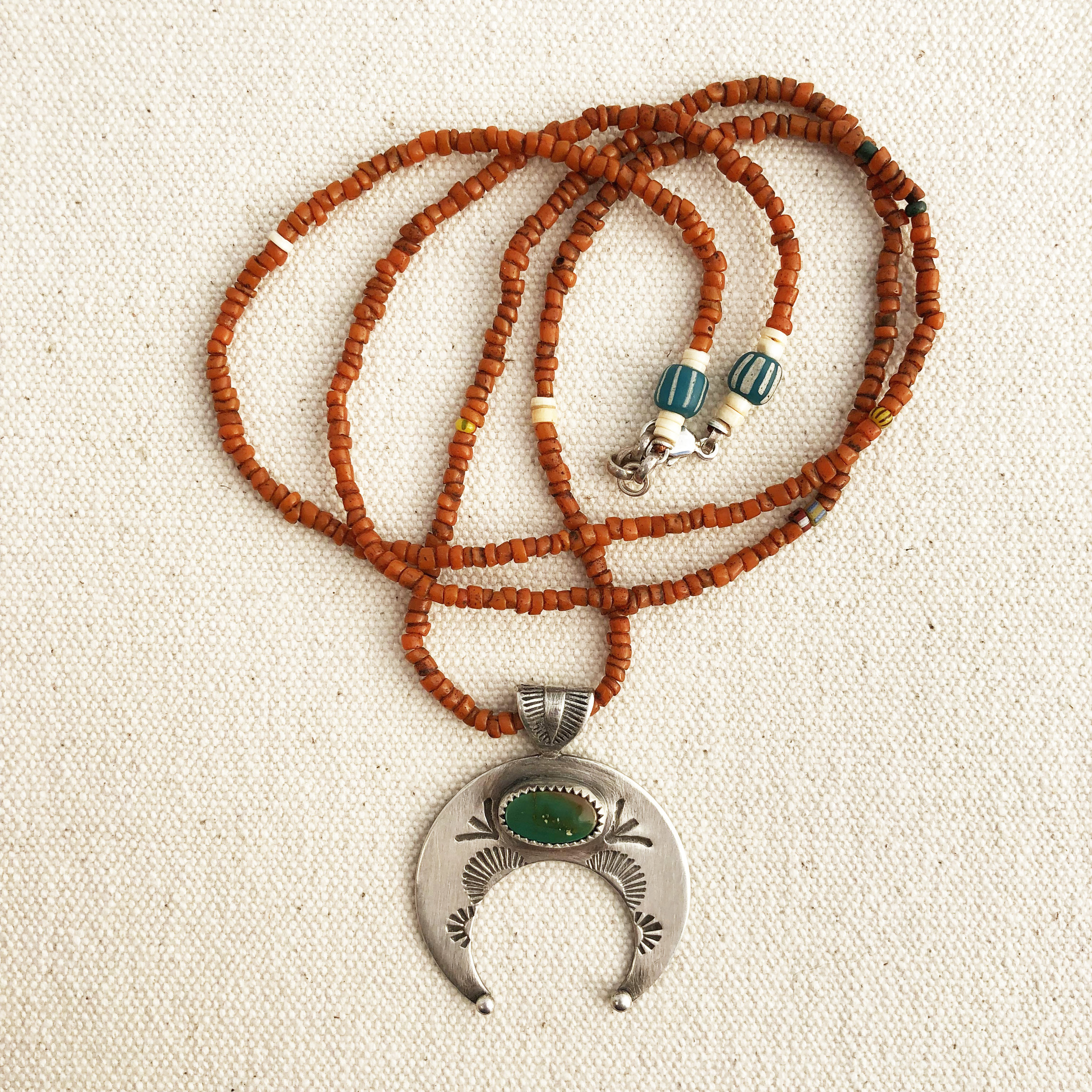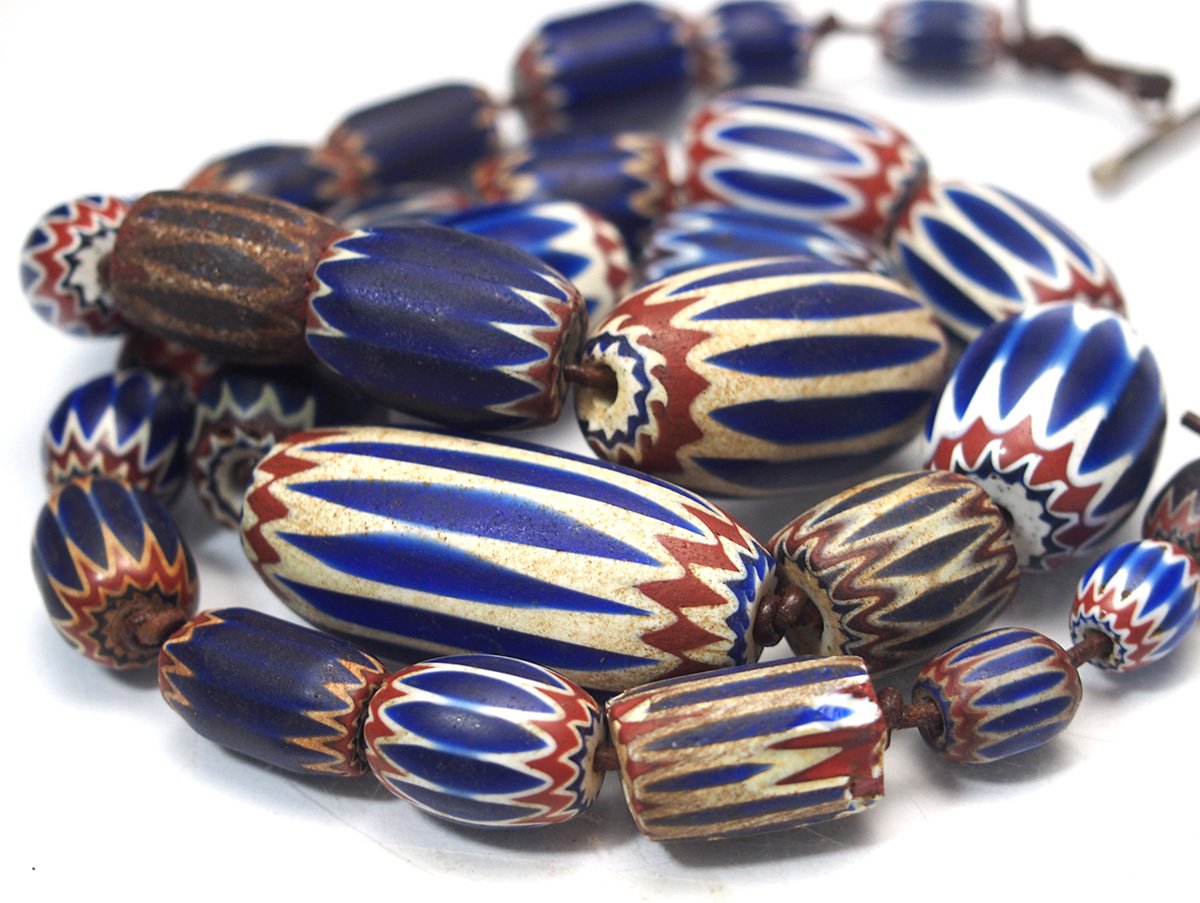Regarding Trade Beads
You will notice in the latest shop update that I’m using trade beads. Some of these beads I’ve had in my personal collection for years. Some I’ve bought specifically for new pieces.
Antique chevron Venetian trade beads
In case you don’t already know, the term “trade bead” refers to any bead used as a form of currency. Trade beads have been used throughout history all over the world. The same type of beads that were traded with the Native Americans were also traded in Africa. My interest obviously lies in the the beads traded in North and South America.
The first European explorers and colonists gave Native Americans glass and ceramic beads as gifts and used beads to trade for goods. Native Americans had bone, shell, and stone beads long before the Europeans arrived, but the brilliant colors of the European beads was a novelty. European beads became very popular and sought after by Native Americans. Corporations such as the Hudson Bay Trading Company capitalized on this demand and developed lucrative bead-trading markets. The Hudson Bay Trading Company was an organized group of explorers who ventured into the North American continent for trade expeditions during the 19th century.
Plains Indian Bead Work
While the Native American tribes that inhabited the Great Plains are best known for art and crafts utilizing beads, trading posts in the Southwest also imported beads. The last known bead made for Native American trade was the Hubbell bead. This bead was supposedly made for Lorenzo Hubbell owner of the Hubbell Trading Post in Gavado, Arizona.
Buying trade beads is a tricky business. Unless you are a bead historian, with all the gear it takes to date various materials, you are kind of shooting in the dark as to authenticity of the beads. This is the same situation jewelers face when buying turquoise. Unless you personally saw it come out of the earth, you have to rely on your own knowledge of what various stones look like, and on the word of the seller that it is what they say it is. I try to study up on the stones and beads I buy so I have some baseline knowledge and my guesses are educated. I also try to buy from people I trust.
I do not “clean up” the beads I buy. I like them with all their years of collected dirt. I’m working on some strands of trade beads that will be sold separately from a pendant so customers can assemble a full necklace with their choice of beads.
The black and white photos of the Southwest Natives make it impossible to tell the color of the trade beads they wore but I like to think that all types of beads trickled into Navajo and Pueblo territory. I like the idea that a real piece of American history is part of my revival designs.







